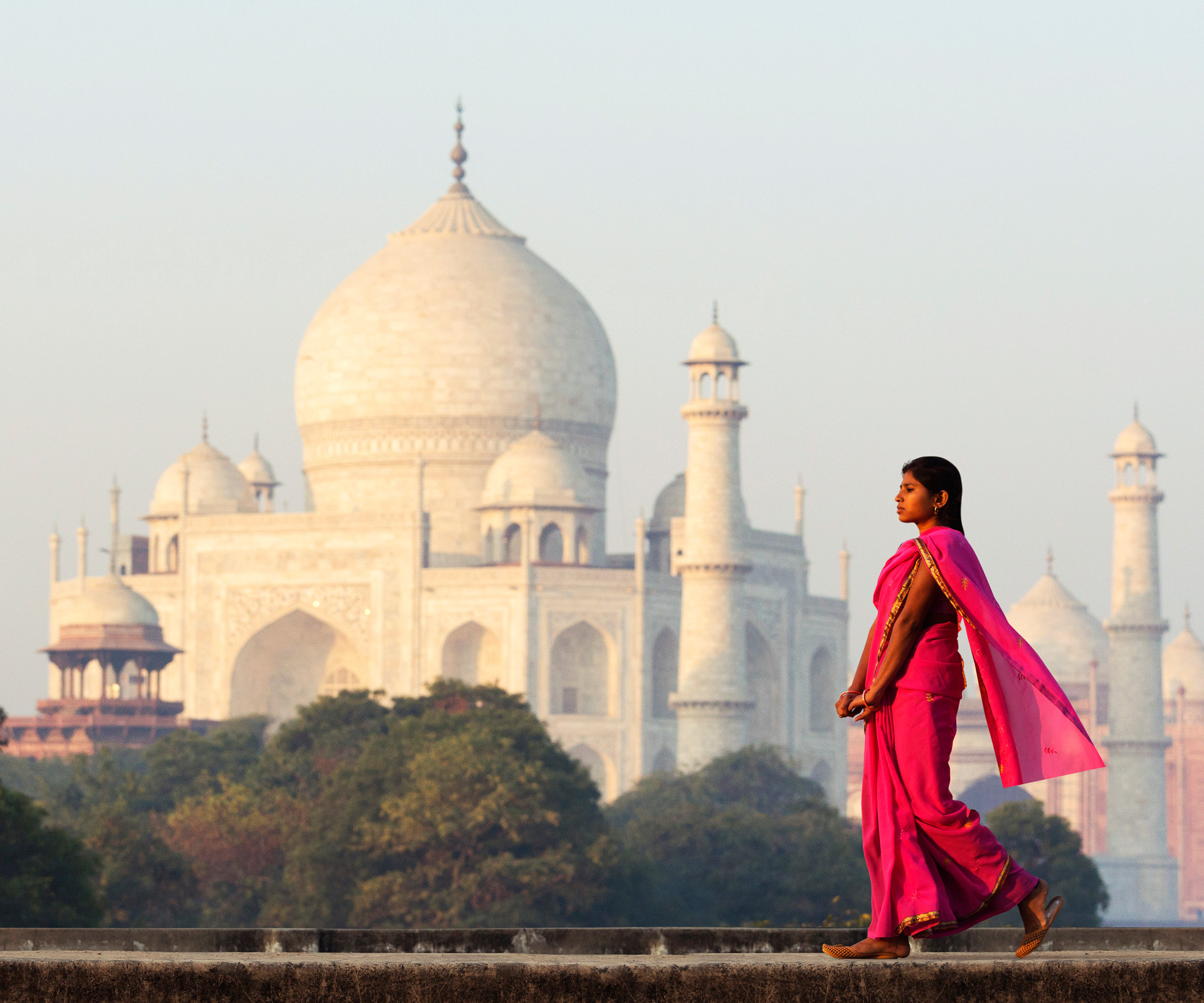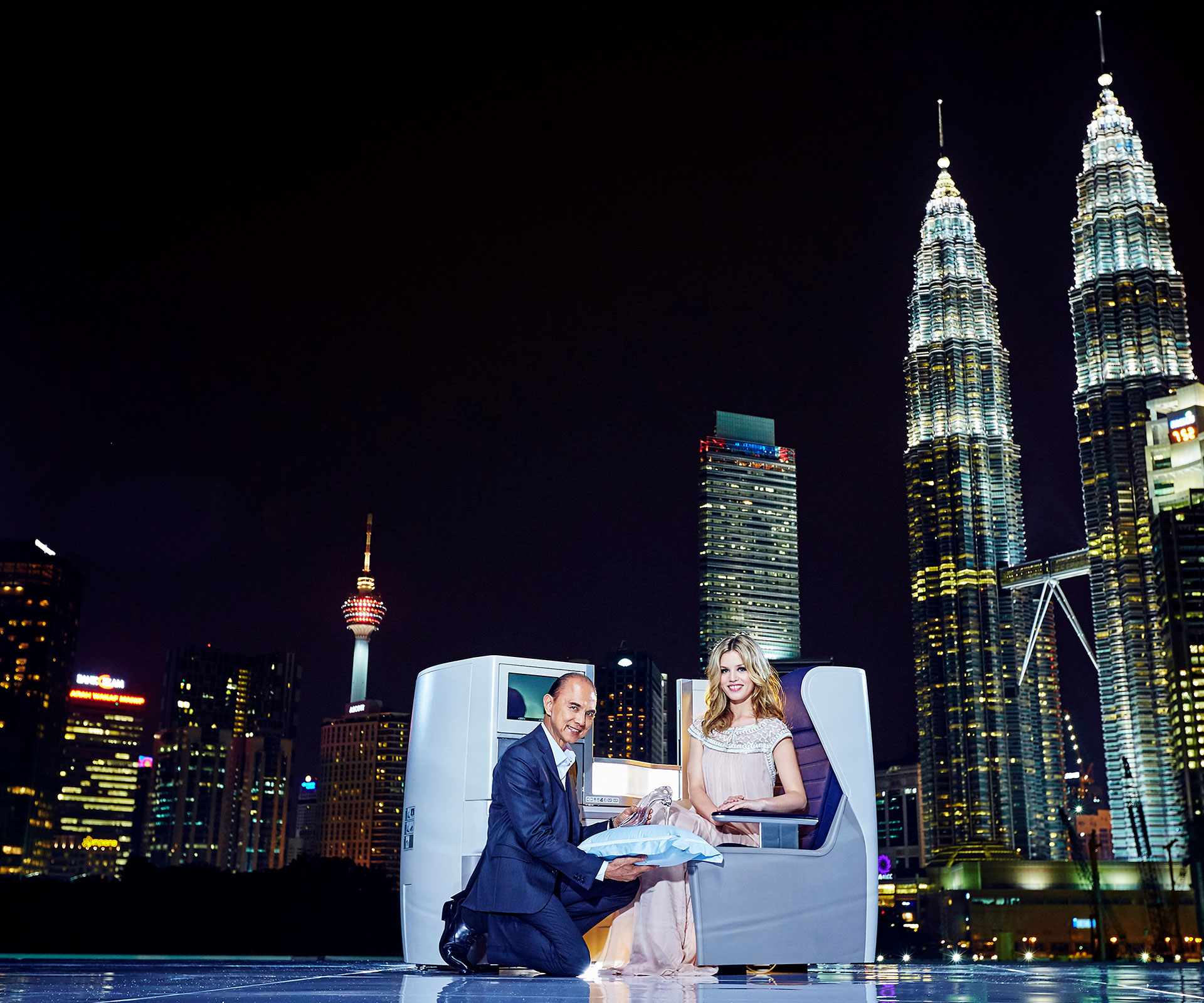The minute you step off the plane and are embraced by the musky heat, you know you’ve arrived somewhere special.
India is one of my favourite places in the world. I love the country’s energy, its optimism, its spirit. It is uplifting and riotously colourful. Yes, there is grinding poverty, but in the depths of the slums you find kindness, generosity of spirit and a genuine love of humanity.
The Indian capital, Delhi, is an intoxicating mix of old and new. On the drive from the airport into the city, oxen drawing ancient wooden carts share the road with gleaming Mercedes. Street vendors display their wares much as they’ve done for hundreds of years, with the fruit and vegetables artfully laid out on rickety wooden stalls. Delicate women in jewel-coloured saris stroll through busy markets like throngs of beautiful, multi-hued butterflies.
Everywhere there are people. People conducting business – on pavements, in tiny tin sheds no bigger than wardrobes, and cheek by jowl with office workers in modern, mirror-glass buildings. People constantly on the move – some crammed into tiny tuk tuks, families of five or six riding a single scooter, labourers hauling impossible loads on tiny carts.
In 1911 Delhi was chosen to replace Calcutta as the seat of government, and renowned British architect Sir Edwin Lutyens was brought in to create a fitting backdrop for the emerging British/Indian rulers. It took about 20 years for Lutyens to create the broad, tree-lined boulevards and impressive blend of neo-classical and art deco buildings that are New Delhi.
Our base here is the Imperial Hotel, famous for its art and antique collections. A mix of old colonial and art deco styles from the 1930s, it takes you straight back to the golden days of the Raj. Nehru, Gandhi and Mountbatten met here to discuss the partition of India and the creation of Pakistan. Security is tight. The threat of terror attacks means our bags are screened and our bus is swept for devices as we arrive.
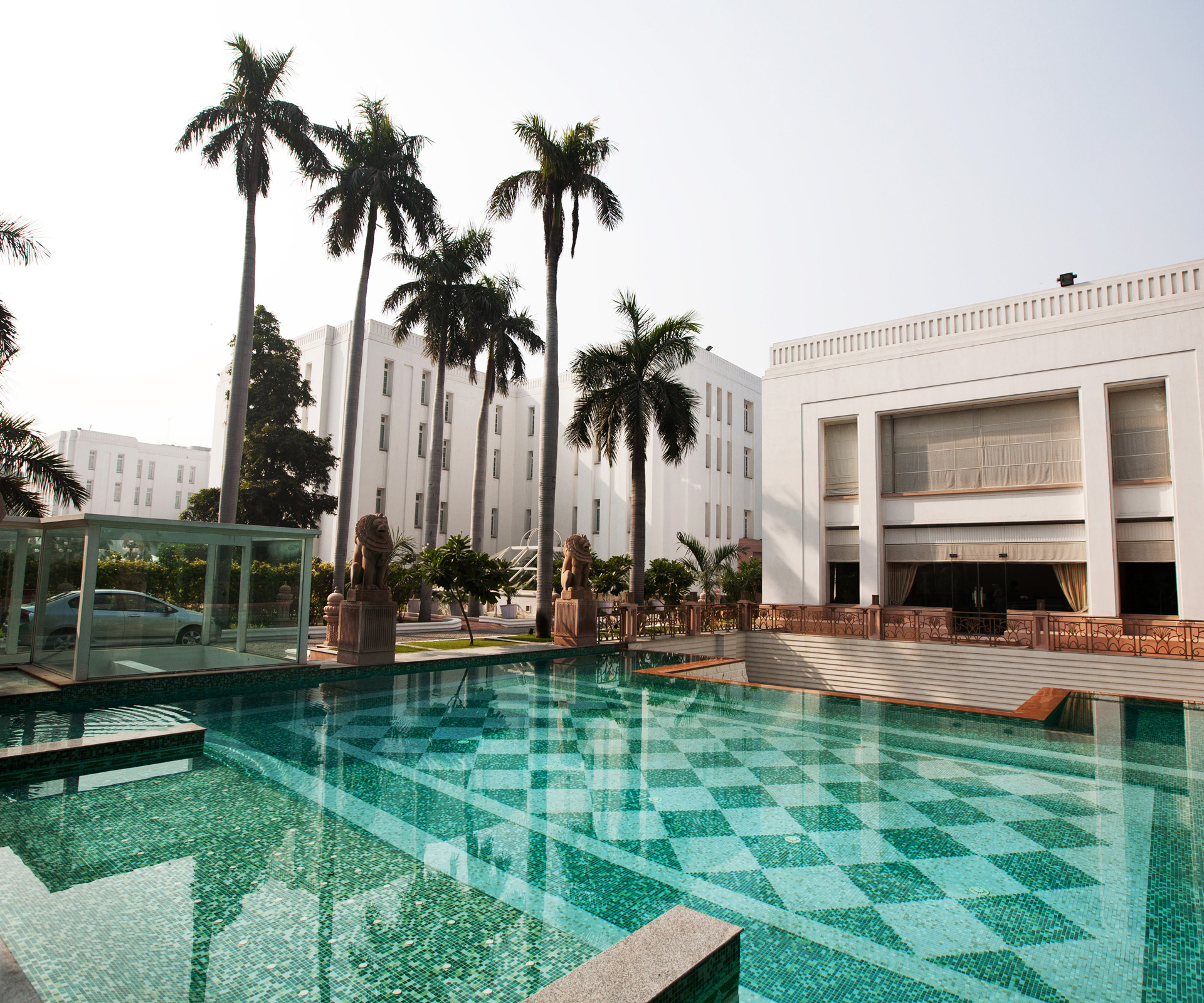
The Imperial Hotel in New Delhi.
The stunning 16th-century tomb of the Mughal emperor Humayun is one of Delhi’s many cultural highlights. A World Heritage Site, the spectacular red and white monument is said to have inspired the Taj Mahal. But don’t miss the more simple and equally beautiful tomb built next door, believe it or not, for the royal barber!
The barber has a special place in Indian life; not unlike his Western counterparts, he is privy to deep family secrets. Among his many talents he often acts as a marriage broker – a key role, given 80 per cent of marriages here are arranged. They must be doing something right, as the divorce rate is just 10 per cent. From the look of this tomb, Humayun’s barber must have held more secrets than most!
Many of the historic attractions are alive with schoolchildren. Immaculate in their uniforms, all have wide smiles and are wanting to have photos taken with visitors. I begin a halting chat with a group waiting to enter the tomb. They’re keen to practise their English and soon they are showing me what’s in their lunchboxes – delicious looking combos of dahl, golden samosas, tomatoes and roti.
It is the people who make India so special. Despite the extreme poverty that’s evident everywhere, they are generally outward-looking, generous of spirit and quick to celebrate what’s good about life.
According to our guide, the supremely elegant Sunil, there are three sayings that sum up the Indian approach to life: anything is possible; easy come easy go; and no problem. All combined, of course, with that delightful, enigmatic wiggle of the head so common in India.

Carrying a pot on the head is traditional practice for many women.
One of the most joyous things about this country is its colour. The people love to decorate everything – even farm vehicles. I’m particularly taken by the tractors sporting tinsel, silver bells, bunches of fake flowers, brightly coloured chiffon scarves and fluorescent beads and tassels, not to mention the artificial fruit. The most splendid have huge shiny metal speakers attached to the wheel arches blaring out Bollywood music. The highways are dotted with stalls selling all manner of tractor bling. I am compelled to stop and buy some. I think it will add immeasurably to the appeal of our trusty, rusty 1960s model at home. There is a reason for the bling though – the tassels particularly, I’m told, are to ward off evil spirits.
Happy with my purchases of tassels, beads, flowers, fake fruit and scarves, we drive 200km south to Agra, home of the Taj Mahal.
The bus trip passes in a flash with the help of a few Kingfisher beers and Bollywood hits ringing in our ears. Delhi and Agra are both sitting under a haze of heat and pollution. The current ‘Clean India’ campaign has a way to go. Piles of rubbish are left to rot in the streets alongside the Hotel Blue Heaven and the Dreams Furniture store. We arrive at midday in a traffic jam. There are two hapless police officers on duty; unfortunately their signals are not co-ordinated and they are each giving conflicting instructions.
The pollution is such that no cars or trucks are allowed within a three-kilometre radius of the Taj, as its pristine white marble is susceptible to the ravages of diesel fumes. It’s best to view it early in the day or later in the afternoon – both for the dramatic effect of the changing light and the lack of tour groups. We arrive at 8am and already there are crowds forming. Up to 15,000 visit each day, and the biggest crowd of all surrounds the seat where Diana, the Princess of Wales, sat to have her lonely picture taken with the famous monument to love in the background. People queue to be photographed on ‘Diana’s seat’.
The Taj Mahal shimmers like a mirage in the rising heat – I honestly feel awestruck by this wonder of the world. Of course I’ve seen it many times in pictures and on television, but nothing quite prepares you for its ethereal beauty. Its marble is delicately inlaid with semi-precious stones: carnelian, malachite, lapis lazuli. We cover our shoes to protect the marble and explore the hidden recesses of the tomb. It took 20,000 labourers 22 years to build Shah Jahan’s symbol of love for his favourite wife Mumtaz. It is, quite simply, exquisite.

The tomb of emperor Humayun, Delhi.
The following day we make a random stop at a little country primary school. The children are just arriving to begin the day. Sunil leaps down from the bus to ask if we may join the early-morning assembly. We are warmly welcomed, the children intrigued by this small group of Kiwi travellers. Spirituality is a big part of Indian life, so there are prayers before an older student leads a meditation. After a discussion about the newspaper headlines of the day the children head to class, but not before a big group of boys heads out to the paddock next door to relieve themselves. That’s just the way things are in India.
If you’d been passing you wouldn’t have picked the building as a school. It’s just a simple rectangular concrete structure, divided into rooms. There is little furniture, but it is spotless and clearly a place of learning. There are quotes from Shakespeare above each of the doors. We are encouraged to stay and talk to the children… we give them a brief geography lesson about New Zealand – and the merits of cricketer Brendon McCullum. They are most enthused about the cricket!
We are in India in large part to see the famed Bengal tiger in the wild. One of the best places to do that is the Ranthambore National Park in Rajasthan. The forests here were once the private hunting grounds of the Maharajas of Jaipur. There were around 60,000 tigers here in the time of the Maharajas. Now there are just 60. The last tiger shooting here was in 1972; now the only shots taken are of the photographic kind.
Our first safari begins before dawn. We climb into open-topped Land Rovers, wrapped in blankets to ward off the early-morning chill. Ranthambore is one of the few parks where daytime tiger sightings are virtually guaranteed. As the conservation efforts here have gathered pace, the tigers have become increasingly comfortable with human activity.
The park, which closes for the rainy season between July and September, is divided into 10 tourist zones, with 15 to 20 registered vehicles in each to avoid overcrowding. Tigers are easy to see in the summer because the animals all hug the waterholes, but the perishing heat means most visitors opt for the winter months between November and February.
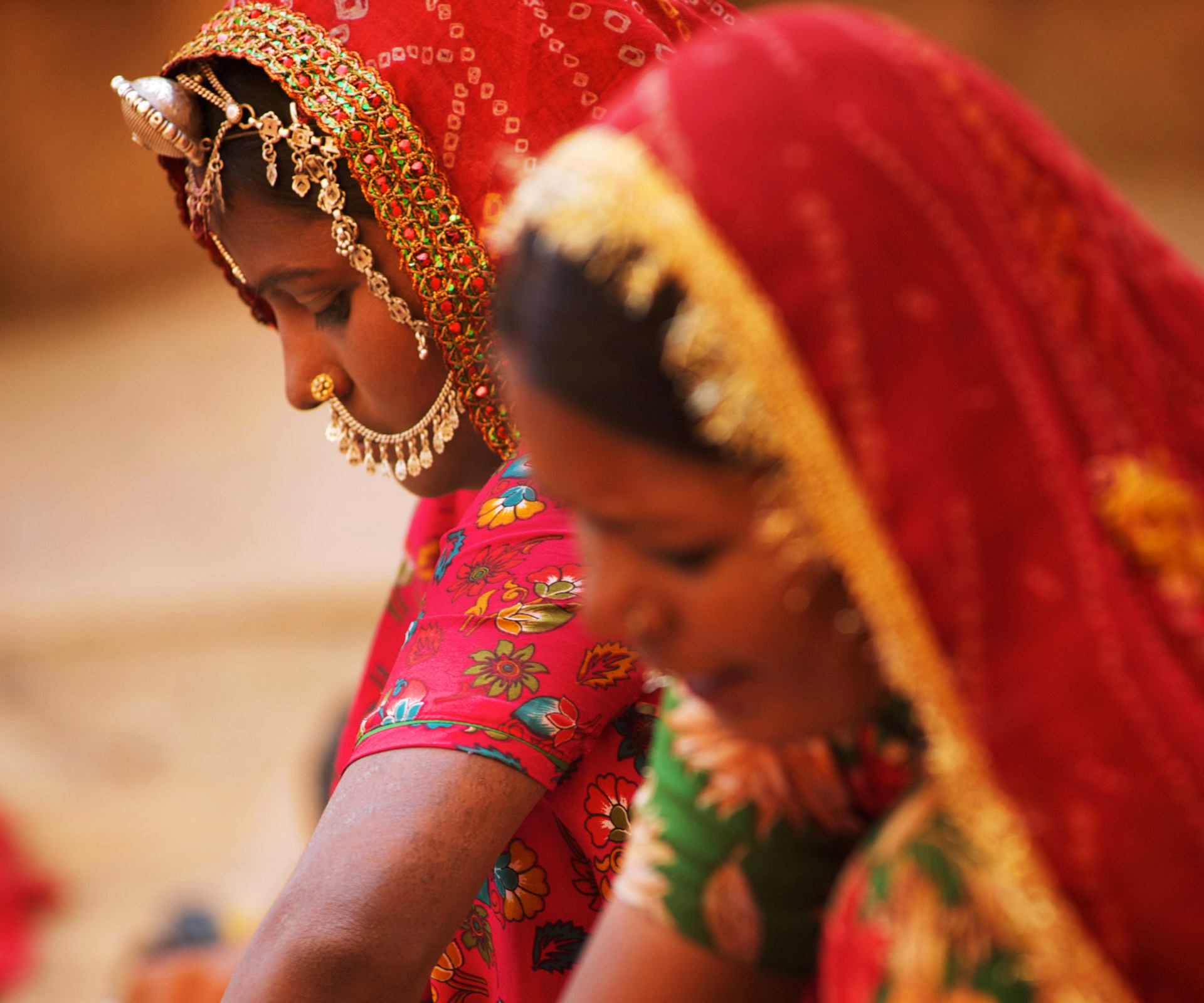
Colourful sari-clad women.
It is beautiful. Sheer bluffs soar into the bright blue winter sky of the Rajasthani winter. Sunlight filters through the trees, rhesus monkeys leap in the canopies, and sambar deer graze lazily in the clearings. The monkeys act as a forest alarm system. When they sense a tiger approaching they give out a distinctive call, warning the other animals and alerting our driver, too, to a certain spot. And then it’s all on. We hurtle along precarious, deeply rutted dirt roads, screaming around corners, throwing up a cloud of red dust in our wake.
My stomach lurches with excitement. Suddenly, there he is – a magnificent Bengal tiger, watching from the forest edge. He is well camouflaged, blending perfectly with the red dirt, the golden sun and the dark branches of the forest. All muscle, power and grace, he eyeballs us as we scramble for cameras. Then, as other vehicles screech to a halt behind us, he turns and languidly strides off into the cover of the trees. The thrill of the sighting has us on an unimaginable high.
Our next safari, at dusk, takes us to the outer reaches of the park. We pass tiny teashops peopled by weather-beaten men in spotless white dhotis. Village life unfolds around us. A sari-clad woman spreads seeds in a freshly ploughed field, a man washes in the village well, children run after us, laughing and shouting. No tigers on this safari, but we’re happy – we’ve glimpsed the India of long ago. Little has changed here for generations.
On our last day in Ranthambore, the gods are smiling. We spot seven tigers – two females, one with three cubs, the other with two. To see these rare, noble creatures in the wild is truly wonderful.
This is India.
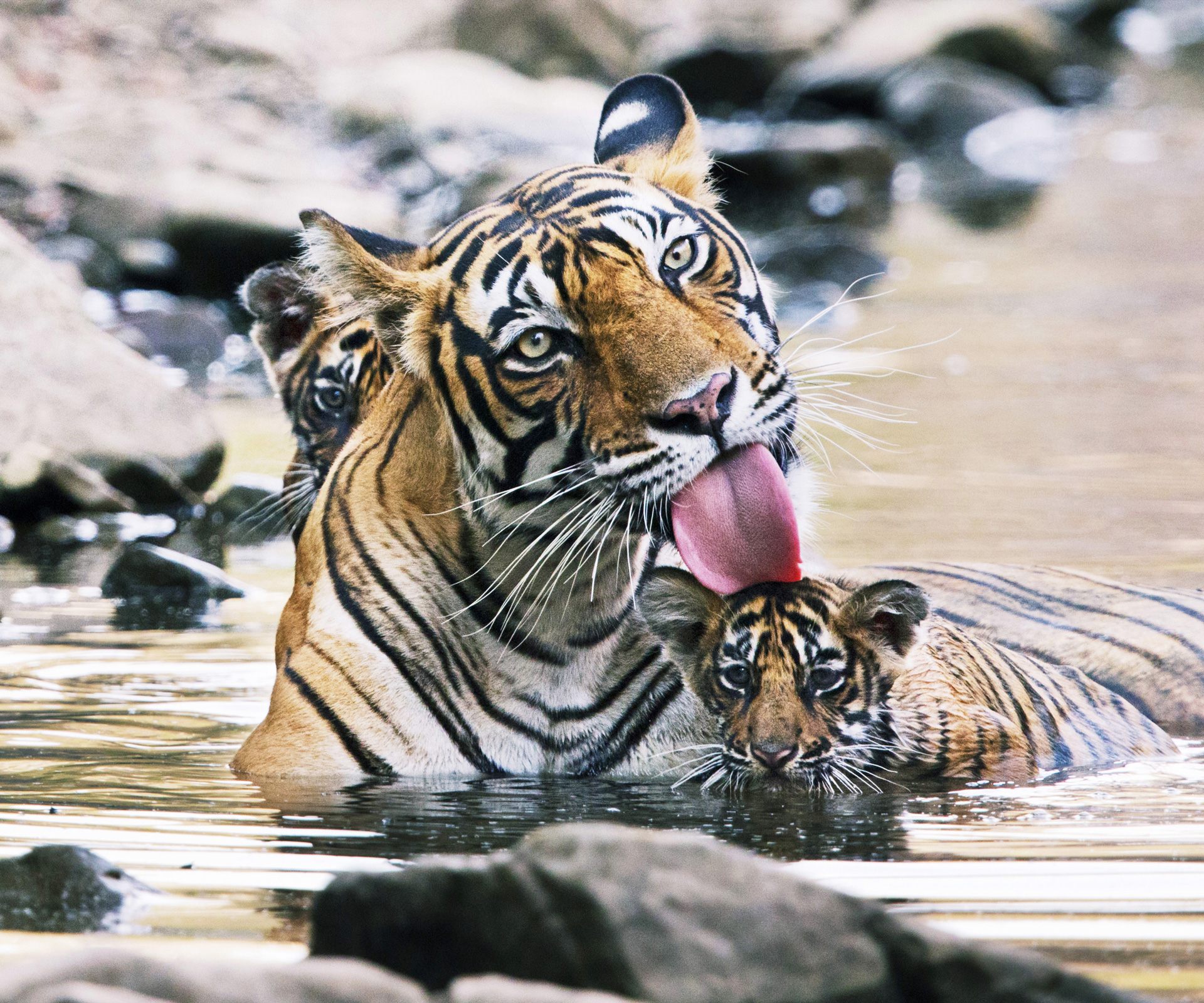
A mother tiger and her cubs. These rare animals can be seen on a safari tour in Ranthambore National Park.
HOW TO GET THE MOST OUT OF INDIA
Try to visit attractions in the early morning or later in the afternoon. The light is good for pictures and there are fewer crowds.
I’ve always found the best clothing to take is loose, cool trousers and cotton T-shirts. Be respectful of local customs. You don’t see many Indian women exposing their knees, so short shorts and very short skirts are a no-no.
A large, light cotton scarf has multiple uses. It keeps you warm in the early morning, and if you run it under a cold tap at lunchtime it’ll keep you cool all afternoon. It’s also very handy for covering arms when visiting temples or religious sites.
Always travel with a medical kit. Although there are chemists, the drugs are often sold under different names and translation can be difficult, especially in remote areas. Include pills for nausea and diarrhoea, Enerlyte for rehydration, some melatonin to help with jet lag, and a good antiseptic antibiotic cream. A course of broad spectrum antibiotics can also be handy, as respiratory infections seem to be the most common illness.
Talk to the people! A camera is a great ice-breaker.
If you’re staying in a hotel that provides mini shampoos, soaps or body lotions, don’t be afraid to take them (they’re built into the cost of your room). Save them to give to anyone you may meet in a village – schoolchildren or whoever looks as though they may enjoy them.
It is best not to give money to beggars. Many of them are controlled by gangs so that just perpetuates their misery. If you want to help, contact one of the aid agencies like World Vision or Save the Children.
Judy Bailey toured India with Bon Voyage Cruises and Travel.
Words by Judy Bailey
Photos by Alamy and Getty Images
